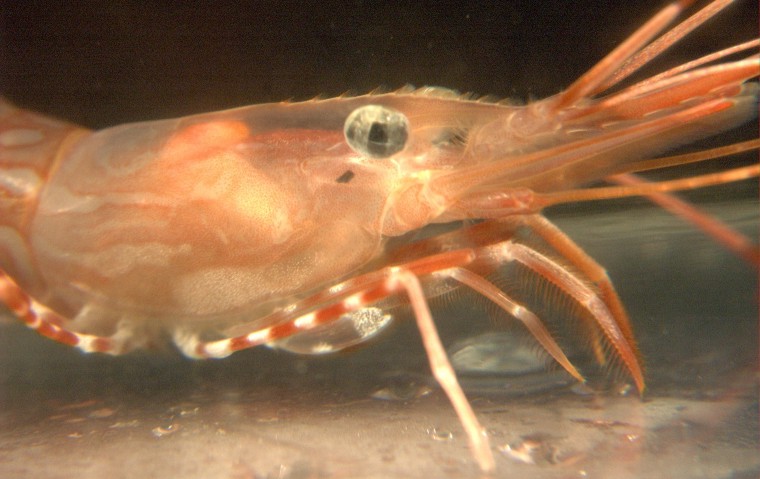Pandalopsis dispar Rathbun, 1902Common name(s): Sidestriped shrimp |
|
| Synonyms: | 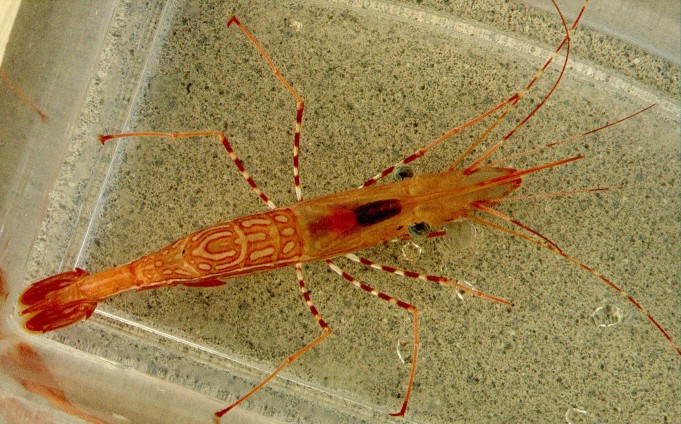 |
|
Phylum Arthropoda
Subphylum Crustacea
Class Malacostraca
Subclass Eumalacostraca
Superorder Eucarida
Order Decapoda
Suborder Pleocyemata
|
|
| Pandalopsis dispar captured at about 70 m depth in San Juan Channel. Total length (telson to rostrum) 15 cm. | |
| (Photo by: Dave Cowles, July 2008) | |
How to Distinguish from Similar Species: Pandalopsis ampla, a deepwater species, does not have dorsal spines on the distal half of its rostrum. Members of genus Pandalus such as P. platyceros, P. eous, P. hypsinotus, and P. danae have much shorter first antennae. No other local shrimp has the distinctive pattern of abdominal stripes that this species has (such as the white stripe that goes along the side of the abdomen), though several such as P. hypsinotus and P. danae do have abdominal stripes.
Geographical Range: Pribilof Islands (Arctic Ocean) to Manhattan Beach, Oregon
Depth Range: 45-650 m
Habitat: Soft bottoms (subtidal)
Biology/Natural History:
This species
is fished commercially with bottom trawls, but because it catches
mostly
midwater shrimp for its own food it is not usually attracted to shrimp
pots. Its large, paddlelike pleopods
suggest its ample swimming ability (photo).
This species is sometimes parasitized by the bopyrid isopod Bopyroides
hippolytes.
| Return to: | |||
| Main Page | Alphabetic Index | Systematic Index | Glossary |
References:
Dichotomous Keys:Kozloff 1987, 1996
Wicksten, 2009
General References:
Butler,
1980
Lamb
and Hanby, 2005
Jensen,
1995
Scientific Articles:
Web sites:
General Notes and Observations: Locations, abundances, unusual behaviors:
We only encounter this species on deep trawls such as those with the University of Washington in San Juan Channel. It is less common there than many of the Pandalus species such as P. platyceros.

This side view shows the distinctive abdomen stripes, the very long
rostrum,
and the fact that both the first and second antennae are much longer
than
the carapace
+ rostrum.
Note that one of the first antennae is broken. Also note the
large
paddle-like pleopods,
one pair of which is extended in this photo. Photo by Dave
Cowles
July 2008
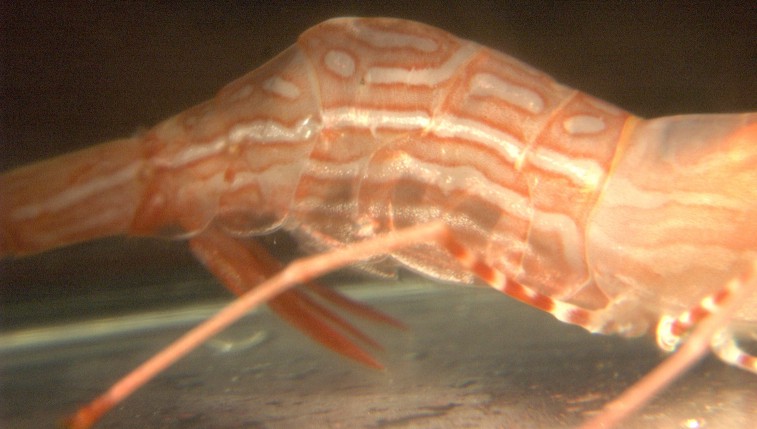
This closeup of the side of the abdomen shows the distinctive stripes,
and also the fact that in this shrimp, as in all Caridean shrimp, the
pleuron
of the second abdominal segment overlaps that of the first and third
segment.
The dorsal spines on the carapace are only on the front half of the carapace and the rostrum.
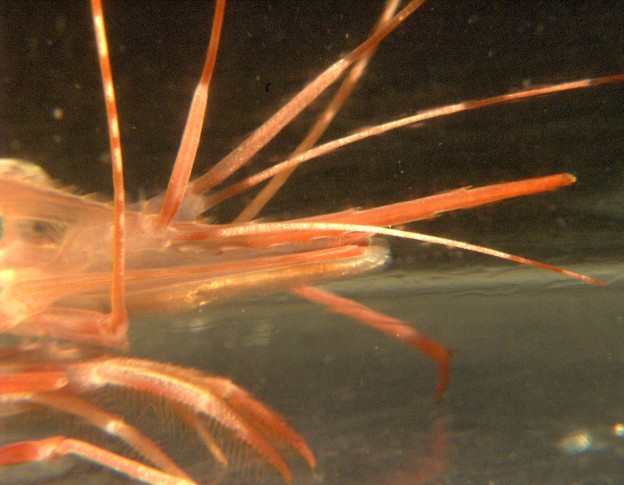
The spines on the rostrum
are found nearly out to the end--not just on the basal part.
Note
that ventral spines also are found nearly out to the end.
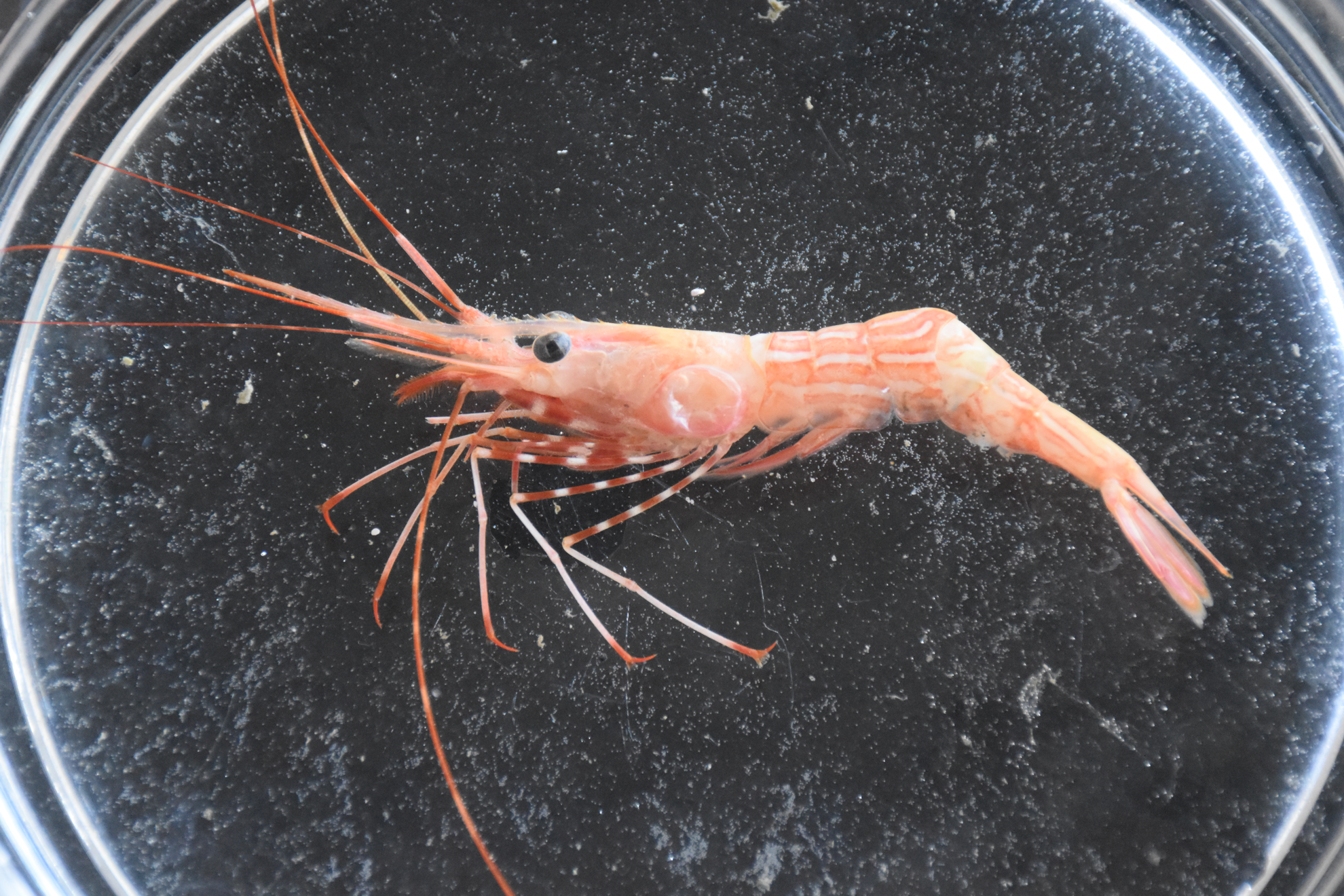
This individual was parasitized by a gill parasite such as Bopyroides hippolites
(which I removed before the photo). The swelling in the gill cover part
of the carapace where the isopod was living can be clearly seen. Photo
by David Cowles, July 2024
Authors and Editors of Page:
Dave Cowles (2008): Created original page
CSS coding for page developed by Jonathan Cowles (2007)
